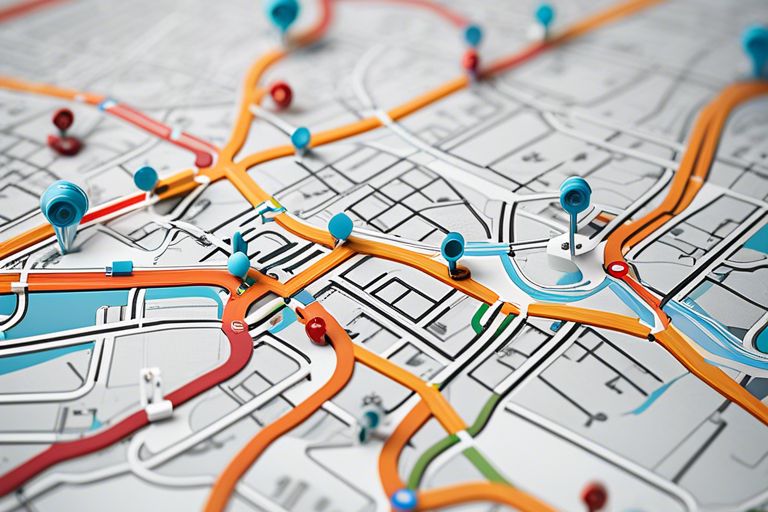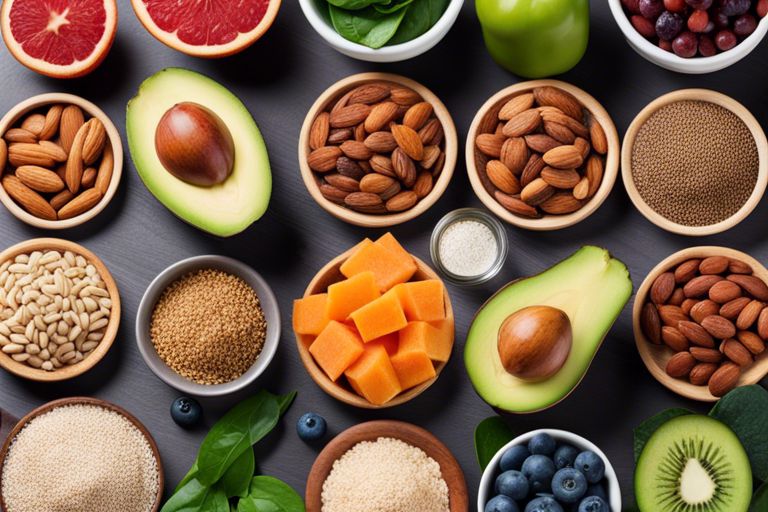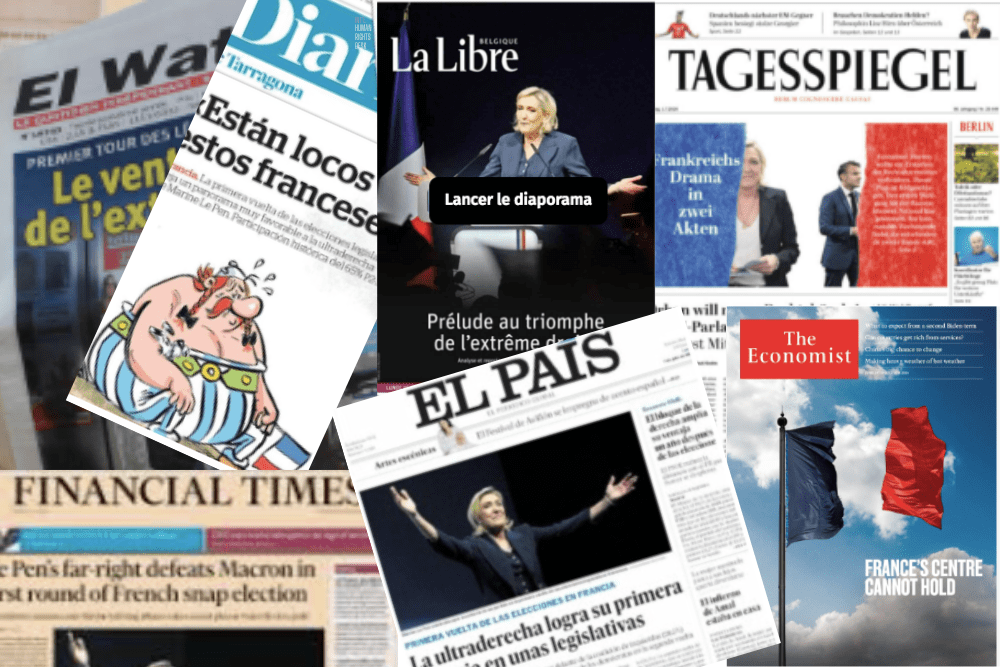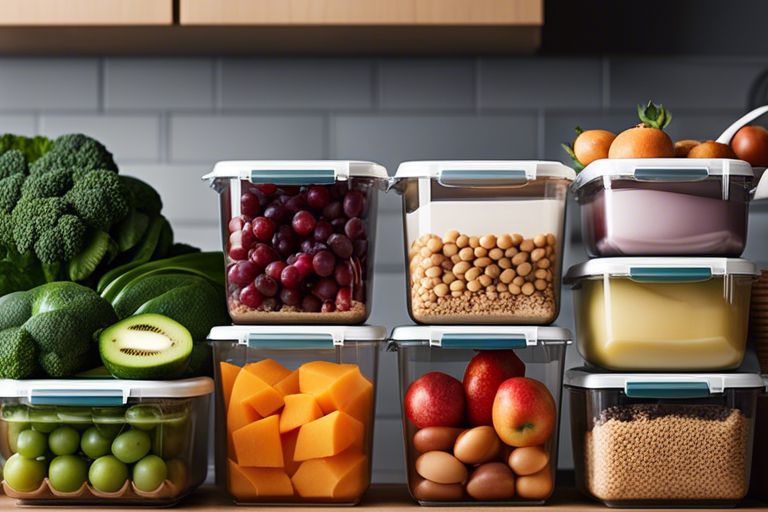There’s no better way to explore Europe than through its intricate web of public transportation systems. Get ready to commence on a journey filled with adventure and efficiency as you navigate the buses, trams, trains, and subways of European cities. With these top tips, you’ll be able to smoothly glide through the bustling streets and picturesque landscapes, immersing yourself in the vibrant tapestry of European culture. Embrace new experiences and make unforgettable memories, all while mastering the art of public transportation like a seasoned traveler.
Research and Planning
While traveling in Europe, it’s necessary to do your research and plan ahead when it comes to using public transportation. With so many options available, from trains to buses to trams, knowing the ins and outs of each system will save you time and stress during your journey.
Knowing Your Options
Any seasoned traveler will tell you that Europe offers a wide range of public transportation options to suit your needs. Whether you prefer the speed of a high-speed train, the convenience of a metro system, or the charm of a trolleybus, each mode of transport has its own unique benefits. Research the cities you’ll be visiting to understand the available options and choose the one that best fits your itinerary and budget.
When navigating Europe’s public transportation systems, remember that each city may have its own set of rules and schedules. Some cities operate 24-hour services, while others have limited hours on weekends. Make sure to check the timetables in advance and plan your journeys accordingly to avoid any unexpected hiccups along the way.
Scheduling and Booking
One vital tip for smooth travels in Europe is to schedule your trips and book tickets in advance whenever possible. By securing your tickets early, you can often take advantage of discounts and avoid long lines at the station. Additionally, booking ahead allows you to reserve seats on popular routes during peak travel times, ensuring a more comfortable and stress-free journey.
Plus, when booking your tickets, be aware of any specific rules or regulations regarding reservations and seat assignments. Some trains and buses require reserved seating, while others operate on a first-come, first-served basis. Understanding these details will help you navigate Europe’s public transportation systems with ease and confidence.
Mastering Metro Maps
Some of the first things you’ll encounter when navigating Europe’s public transportation systems are the intricate metro maps. These maps can seem overwhelming at first glance, but fear not! With a few simple tips, you’ll be able to navigate them like a pro in no time.
Deciphering Symbols and Colors
Any seasoned traveler knows that metro maps are filled with symbols and colors that represent different lines, stations, and transfers. Take the time to familiarize yourself with the key for the map you’re using, as this will make deciphering the symbols much easier. Additionally, pay attention to the colors of the lines – each color corresponds to a different metro line, making it easy to follow your route.
When looking at a metro map, keep in mind that certain symbols indicate important information, such as transfer points, wheelchair accessibility, and tourist attractions. By understanding these symbols, you can plan your journey more efficiently and avoid any unnecessary confusion or delays.
With a bit of practice and patience, you’ll soon find that reading metro maps becomes second nature. Don’t be intimidated by the complexities of the maps – embrace them, and you’ll be zipping around Europe’s cities with ease.
Navigating Peak Hour and Off-Peak Travel
To truly master Europe’s public transportation systems, you need to understand the differences between peak hour and off-peak travel. Peak hours are typically during the morning and evening rush when commuters are heading to and from work. During these times, metro trains can be overcrowded, making it harder to find a seat or even space to stand comfortably.
During off-peak hours, however, you’ll enjoy a more relaxed and less crowded journey. If your schedule allows, try to plan your travels during these times to avoid the hustle and bustle of peak hours. Not only will you have a more pleasant experience, but you’ll also have more space to move around and take in the sights during your journey.
With some careful planning and flexibility in your schedule, you can make the most of your time exploring Europe’s cities. Whether you choose to travel during peak hours for a glimpse into local life or opt for a more relaxed journey during off-peak times, mastering the metro system will enhance your travel experience.
Buying Tickets and Fares
Clearly, navigating Europe’s public transportation systems can be a bit daunting, but with the right knowledge, you can easily master it. With respect to buying tickets and fares, it’s vital to familiarize yourself with the local systems and options available. For valuable insights and tips on transportation, check out Travel Tips: Transportation to enhance your journey.
Single Ride vs. Multi-Ride Tickets
To start, understand the difference between single ride and multi-ride tickets. **Single ride tickets** are valid for one journey from point A to point B, typically with no transfers allowed. **Multi-ride tickets**, on the other hand, offer the flexibility of multiple journeys within a specified timeframe. **If you plan to explore a city extensively**, a multi-ride ticket is often more economical and convenient. It saves you time and the hassle of purchasing tickets for each ride separately. **In major cities like Paris or London**, consider investing in a multi-day pass for unlimited travel during your stay.
Discounts and Special Offers
For **frequent travelers** or those staying longer in a city, look out for discounts and special offers on transportation passes. **Student discounts, senior citizen fares, or group discounts** are common in many European cities, offering substantial savings. **If you’re under 26, you may qualify for youth fares or special passes**. Additionally, some cities offer tourist passes that include discounted or free entry to attractions along with transportation, making it a cost-effective choice for sightseeing. **Research available offers and choose the one that suits your travel plans best**.
For more information on discounts and special offers, you can also check with local tourist offices or transportation authorities. They can provide details on current promotions and packages to maximize your savings during your trip.
Tackling Train Travel
Your European adventure wouldn’t be complete without experiencing train travel, and navigating the continent’s extensive rail network can be both exciting and overwhelming. With a few insider tips, you can make the most of your train journeys and ensure a smooth ride.
Booking Seats and Reservations
Tackling train travel begins with booking your seats and reservations. **Reservations** are mandatory on some high-speed and international trains in Europe, so make sure to check if you need to secure a seat in advance. This is especially important during peak travel seasons when trains can fill up quickly. **Booking your seats early** not only guarantees you a spot on the train but can sometimes save you money with early bird discounts. Additionally, having a reserved seat gives you peace of mind and ensures you won’t be left standing on a crowded train!
**Seat selection** can also make a big difference in your journey experience. If you prefer a quiet ride, opt for a seat in the quiet carriages. If you enjoy scenic views, choose a seat by the window. **Choosing the right seat** can enhance your train journey and make it more comfortable and enjoyable.
Remember to **validate your ticket** before boarding certain trains to avoid fines. Ticket validation machines are usually located on the platforms. By following these tips, you can navigate the ins and outs of booking seats and reservations for a stress-free train journey in Europe.
Luggage and Bike Storage
Luggage and bike storage are important considerations when traveling by train in Europe. **Luggage restrictions** vary from one train operator to another, so it’s crucial to check the guidelines before your trip. Most trains have **overhead racks** for small bags and suitcases, while larger luggage can be stored in the dedicated luggage areas at the ends of the carriages.
If you plan to bring a bike on board, look for trains that offer **bike storage options**. Some trains have **designated areas** for bikes, while others may require you to reserve a space for your bicycle. **Securing your bike** properly is important to ensure it doesn’t impede other passengers or block walkways. Be prepared to potentially pay an additional fee for bringing your bike on board.
Understanding the **luggage and bike storage** arrangements on European trains will help you travel seamlessly with all your belongings. By following the guidelines and being considerate of other passengers, you can enjoy a hassle-free journey with your luggage and bike in tow.
Bus Travel Basics
Not sure how to navigate Europe’s public transportation systems? Don’t worry; bus travel can be a convenient and cost-effective way to explore the continent. Here are some tips to help you make the most of your bus journeys.
Route Planning and Schedules
For efficient bus travel in Europe, it’s vital to familiarize yourself with route planning and schedules. Research the bus routes in advance and check the timetables to avoid long waits at the bus stops. Remember that buses in Europe typically run on time, so make sure you arrive a few minutes early to catch your bus. You can use various apps and websites to plan your route and navigate the bus systems effortlessly.
On-Board Etiquette
On the bus, it’s vital to follow **etiquette** to ensure a smooth journey for yourself and your fellow passengers. Always give up your seat to elderly or pregnant passengers and make room for others when the bus is crowded. Avoid talking loudly on your phone or playing music without headphones, as this can disturb those around you. Additionally, make sure to keep your belongings close to you to prevent any inconvenience to other passengers.
Etiquette is a crucial aspect of bus travel in Europe, and being mindful of your actions can make the journey more pleasant for everyone on board. **Respecting** the rules and **considering** others’ comfort will not only ensure a smooth bus ride but also leave you with a positive travel experience. So, remember to be courteous and mindful of your surroundings while traveling on European buses.
Ferry Travel Fundamentals
Once again, as you begin on your European adventures, you may find yourself considering ferry travel as a mode of transportation. Ferry systems can be a convenient and scenic way to navigate between different countries and islands across Europe. If you’re unsure about how to navigate the process of using ferry transportation, you can check out this Quora post for more information.
Booking and Boarding Procedures
Fundamentals of ferry travel include understanding the booking and boarding procedures. To ensure a smooth journey, it’s advisable to book your ferry tickets in advance, especially during peak travel seasons. Most ferry companies offer online booking options, allowing you to secure your spot and avoid long queues at the ticket counters.
When boarding the ferry, make sure to arrive at the port with sufficient time before departure. Have your ticket ready for inspection, as well as any necessary identification documents. Follow the instructions of the ferry staff for boarding procedures and locate your designated seating area or cabin for the voyage.
Remember to familiarize yourself with the safety protocols and emergency exits on the ferry. Pay attention to any announcements or guidelines provided by the crew during the journey to ensure a safe and pleasant sailing experience.
Sea Sickness Remedies
Sickness is a common concern for travelers on sea journeys. If you’re prone to motion sickness, there are several remedies you can consider to alleviate discomfort during the ferry ride. Sea bands or acupressure wristbands are popular for reducing nausea by applying pressure to specific points on your wrists. Additionally, over-the-counter motion sickness medications can be effective in preventing symptoms.
To further mitigate sea sickness, try to stay hydrated and avoid heavy or greasy foods before and during the voyage. Focusing on the horizon or spending time on deck where you can feel the fresh air can also help reduce feelings of queasiness. If you’re still feeling unwell, seek advice from the ferry crew who may have additional remedies or assistance available.
Plus, it’s always a good idea to pack a small travel kit with vitals like anti-nausea medication, ginger candies, and a bottle of water to ensure you’re prepared for any bouts of sea sickness that may arise during the journey.
Airport Connections
To make your journey through Europe’s public transportation systems smoother, it’s crucial to have a good understanding of how to navigate airport connections. Whether you’re arriving or departing, airports can be hectic, and figuring out the best way to reach your destination is key. Here are some top tips for making airport connections hassle-free.
Shuttle Services and Taxis
Connections from the airport to the city center can often be made through shuttle services or taxis. Shuttle services are convenient and frequently offer direct routes to popular destinations. They are usually well-signed and easy to find outside airport terminals. Alternatively, taking a taxi can be a more flexible option if you prefer a door-to-door service. Be aware that taxis can be more costly, especially during peak travel times, so it’s worth considering this when planning your budget.
If you opt for a shuttle service, make sure to check the schedule beforehand to avoid long waiting times. Taxis are readily available outside most airports, but it’s advisable to choose official taxi ranks to ensure safety and fair pricing. Whichever option you select, both shuttle services and taxis can provide you with a convenient and reliable way to reach your destination.
Budget-Friendly Alternatives
To save money on airport connections, consider using public transportation options such as buses or trains. Many European airports are well-connected to city centers through these modes of transport, offering a cost-effective alternative to taxis and shuttles. Public transportation can be particularly beneficial if you’re traveling on a tight budget or looking to experience the local commute.
For instance, some cities offer day passes or visitor cards that include unlimited access to public transportation for a set price, making it a convenient and economical choice for exploring the city. By opting for public transportation, you not only save money but also immerse yourself in the authentic travel experience of locals. So, next time you’re at the airport, consider taking the public transport route for a more budget-friendly and enriching journey.
City-Specific Transportation Tips
Many European cities have efficient public transportation systems that can easily take you to popular tourist attractions, local hotspots, and hidden gems. Here are some city-specific tips to help you navigate the transportation networks like a pro:
Paris: The Art of Using Velib
Any visitor to Paris should consider using the city’s Velib bike-sharing system. With thousands of bicycles available at stations throughout the city, it’s a convenient and eco-friendly way to get around. Simply purchase a short-term pass at any station using your credit card, unlock a bike, and pedal your way through Paris’s charming streets. Just remember to always obey traffic laws and watch out for pedestrians. Thou, be cautious of Parisian drivers who are known for their assertive style on the road.
Rome: Navigating the Metro and Bus System
Any traveler in Rome must familiarize themselves with the city’s metro and bus system. The metro is a fast and efficient way to travel between popular sites like the Colosseum, Vatican City, and Spanish Steps. The bus network complements the metro, reaching areas that the metro doesn’t cover. Be prepared for crowded conditions during peak hours and always be aware of your belongings in crowded spaces. Thou, keep in mind that Rome’s public transportation can get exceptionally busy during rush hours and holidays so plan your journeys accordingly.
It is worth noting that while Rome’s metro system is relatively easy to navigate, the bus system can be a bit more challenging due to its numerous routes and stops. However, with a little patience and a good map, you can quickly get the hang of it. One helpful tip is to purchase a daily or weekly ticket that allows for unlimited travel on both the metro and buses, saving you time and money during your stay in the Eternal City.
Dealing with Delays and Cancellations
All public transportation systems in Europe are efficient, but delays and cancellations can still happen. It’s important to have a plan in place for when things don’t go as smoothly as expected.
Staying Informed and Patient
Cancellations can be frustrating, but staying informed and patient is key. Keep an eye on electronic notice boards for updates, and don’t be afraid to ask station staff for information. Keep in mind, these situations are out of your control, so take a deep breath and remain patient. Delayed or canceled trains are common occurrences, but most systems are well-equipped to handle such issues.
Keep in mind, maintaining a sense of humor can go a long way in these situations. Take the opportunity to explore the nearby area, grab a coffee, or strike up a conversation with a fellow traveler. Consider it an unplanned adventure within your journey. By staying informed, patient, and adaptable, you can navigate through delays and cancellations with ease.
Finding Alternative Routes
For situations where delays or cancellations affect your travel plans, it’s important to have a backup plan. Look for alternative routes to reach your destination.
It can be helpful to familiarize yourself with other transportation options in the area, such as buses or trams, which can serve as viable alternatives. Keep your smartphone or a map handy to quickly identify these alternative routes.
Keep in mind, there is always more than one way to reach your destination. Keeping an open mind and being flexible with your travel plans can make dealing with delays and cancellations much less stressful. Embrace the unexpected and view it as an opportunity to discover new places or experiences along the way.
Safety and Security
Unlike Navigating European public transport as an international traveler, safety and security should be your top priorities when using public transportation in Europe. While Europe is generally safe, it’s important to remain vigilant and take precautions to ensure a smooth and secure journey.
Pickpocketing Prevention
Prevention is key when it comes to pickpocketing in European public transportation systems. Keep your valuables secure and out of sight, preferably in a money belt or a secure inner pocket. Avoid displaying expensive items such as jewelry or flashy electronics, as these can attract unwanted attention from thieves. Be especially cautious in crowded areas such as buses, trains, and metro stations, where pickpockets often operate.
Stay alert and be mindful of your surroundings, especially in tourist hotspots and busy transportation hubs. If you feel someone trying to pickpocket you, don’t hesitate to speak up or seek help from nearby passengers or authorities. Do not forget, it’s always better to be safe than sorry when it comes to protecting your belongings while traveling in Europe.
Emergency Services and Contacts
Prevention is crucial, but it’s also important to know how to access emergency services and contacts in case of any unforeseen situations. Save important numbers such as the local police, ambulance, and your country’s embassy or consulate in your phone or write them down on a card to keep with you at all times. In case of an emergency, you’ll be prepared and able to quickly reach out for help.
Emergency situations can arise unexpectedly, so staying informed and having access to important contacts can make a significant difference in how effectively and swiftly help can reach you when needed. Your safety is paramount, and being proactive in knowing who to contact during emergencies can provide you with peace of mind during your travels in Europe.
Cultural Differences and Etiquette
Despite the convenience and efficiency of Europe’s public transportation systems, navigating them can be a cultural experience in itself. Understanding the cultural differences and etiquette when using public transportation in European countries can enhance your travel experience and help you blend in seamlessly with the locals.
Queueing and Boarding Customs
Etiquette: In Europe, queueing is taken very seriously, especially when boarding buses, trams, or trains. Always wait your turn in an orderly line, and avoid pushing or cutting in front of others. When the vehicle arrives, allow passengers to alight before boarding. This demonstrates respect for others’ space and time, and it’s a common courtesy that locals appreciate.
Travelers: Showing patience and following queueing customs not only ensures a smoother boarding process but also helps you avoid any unpleasant encounters with locals who might frown upon disruptive behavior. Keep in mind, when in doubt, observe how the locals queue and follow their lead.
Respect for Locals and Fellow Travelers
Etiquette: Respect for locals and fellow travelers is paramount when using public transportation in Europe. Keep your voice down, especially during phone conversations, and avoid playing loud music. Be mindful of your surroundings and make space for others, particularly elderly or disabled passengers. Small gestures like offering your seat to someone in need can go a long way in showing respect.
Differences: Europeans value personal space and quietude, so be mindful of your volume and actions while traveling. Engaging in loud or disruptive behavior can be seen as disrespectful and inconsiderate. By respecting the social norms of the country you’re visiting, you not only show courtesy to the locals but also contribute to a harmonious travel experience for everyone on board.
Technology and Apps
Keep up with the times by utilizing technology and apps to make your European travel experience smooth and efficient. From downloadable transit maps and guides to real-time information and updates, these tools can be your best companions as you navigate Europe’s public transportation systems.
Downloadable Transit Maps and Guides
Transit maps and guides are necessary tools for planning your journeys in European cities. With a plethora of apps offering downloadable maps, you can easily access information on train, bus, and tram routes, as well as schedules and fares. These offline maps are handy when you’re underground or in areas with poor connectivity, ensuring that you never get lost while exploring the urban jungle.
Additionally, many apps provide valuable tips on the best routes to take, estimated travel times, and station locations. Whether you’re hopping on the London Tube or navigating the Paris Metro, having a digital map at your fingertips will give you the confidence to travel like a local.
Before you commence on your European adventure, make sure to download a few transit maps and guides for the cities you’ll be visiting. Familiarize yourself with the apps’ features, bookmark your favorite routes, and get ready to commence on a hassle-free journey across Europe.
Real-Time Information and Updates
Maps are valuable tools, but in a dynamic environment like public transportation, real-time information is key. Fortunately, many apps offer live updates on delays, cancellations, and platform changes, allowing you to adjust your travel plans on the go. With real-time information at your disposal, you can avoid unnecessary wait times and ensure that you reach your destination on time.
Some apps even provide notifications for service disruptions and alternative routes, helping you navigate unexpected challenges with ease. By staying informed about the latest developments in the transit network, you can make informed decisions and minimize disruptions to your travel itinerary.
Embrace the power of technology and apps to enhance your European travel experience. By leveraging downloadable transit maps, real-time information, and updates, you can confidently explore the continent’s bustling cities and charming towns, knowing that you have the tools to navigate Europe’s public transportation systems with ease.
Budgeting and Cost-Saving
After you’ve planned your itinerary and are ready to board that first train or bus in Europe, it’s important to think about how you can save money on transportation during your trip. Budgeting wisely will allow you to stretch your travel funds further and make the most of your European adventure.
Affordable Transportation Options
When looking for affordable transportation options in Europe, consider using regional trains or buses instead of high-speed trains. Regional transportation is often more budget-friendly and can take you to charming off-the-beaten-path destinations that are not easily accessible by high-speed trains. Additionally, purchasing multi-day or multi-ride passes can help you save money if you plan to use public transportation frequently during your stay. These passes usually offer a discounted rate per trip, saving you valuable euros in the long run.
Another cost-saving tip is to opt for public transportation over taxis or car rentals whenever possible. Public transportation networks in European cities are efficient, well-connected, and relatively inexpensive. By using buses, trams, metros, and trains, you not only save money but also get a chance to immerse yourself in the local culture and observe daily life up close. Walking or cycling is another excellent way to explore European cities without breaking the bank. Many cities offer bike rental services or have bike-sharing programs, allowing you to pedal around town at your own pace.
Free or Low-Cost Alternatives
LowCost: If you’re on a tight budget, don’t worry – there are plenty of free or low-cost transportation options available in Europe. Many cities offer free walking tours that not only provide you with an insightful glimpse into the city’s history and culture but also help you navigate the public transportation system like a local. Some cities even provide free shuttle services or sightseeing buses that loop around major attractions, offering a convenient and affordable way to explore the city.
Options: To further cut down on transportation costs, consider taking advantage of special tourist cards or passes that include free or discounted access to public transportation, museums, and attractions. These cards are usually valid for a certain number of days and can be a cost-effective way to explore a city while enjoying various perks and discounts. Remember to research and compare different options to find the best deals that suit your itinerary and budget.
1. Research routes and schedules in advance for smoother travel.
2. Use contactless payment methods for convenience and ease.
3. Validate tickets before boarding to avoid fines.
4. Be aware of cultural norms and etiquette while traveling.
5. Keep belongings secure and be mindful of pickpockets.
6. Utilize transportation apps for real-time updates and information.
To Wrap Up
So, as you journey through Europe and explore its various cities, remember that public transportation can be one of your greatest allies in navigating the bustling streets and vibrant neighborhoods. By following the top tips outlined in this guide, you can save time, money, and stress while making the most of your travel experience.
Remember to research transportation options before you arrive, familiarize yourself with local ticketing systems, and always keep a map or transportation app handy. Embrace the adventure of using different modes of transport, whether it’s trams in Amsterdam, metro in Paris, or buses in Barcelona. By immersing yourself in the local public transportation systems, you can truly soak up the authentic culture of each destination.
So, as you initiate on your European adventures, let the efficient and vast public transportation networks be your companion in discovering the hidden gems and iconic landmarks of each city. With a little bit of preparation and a sense of curiosity, you can confidently hop on and off trains, buses, and trams, creating unforgettable memories along the way. Enjoy the journey, be open to new experiences, and embrace the excitement of exploring Europe’s public transportation systems!














